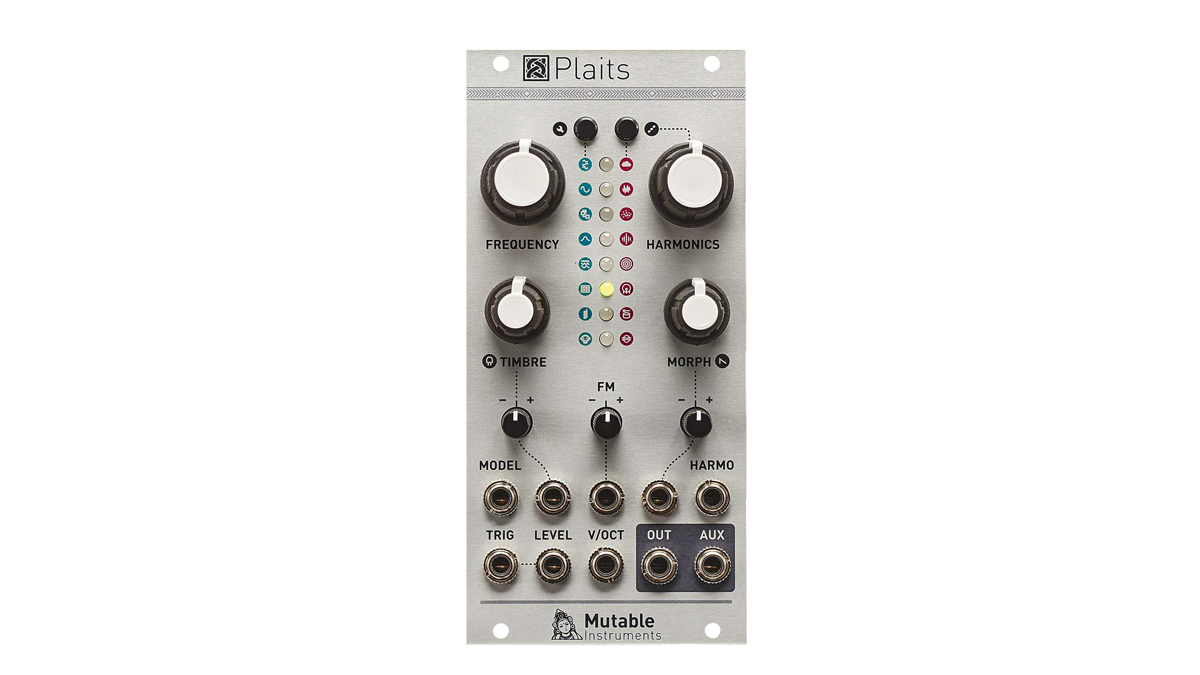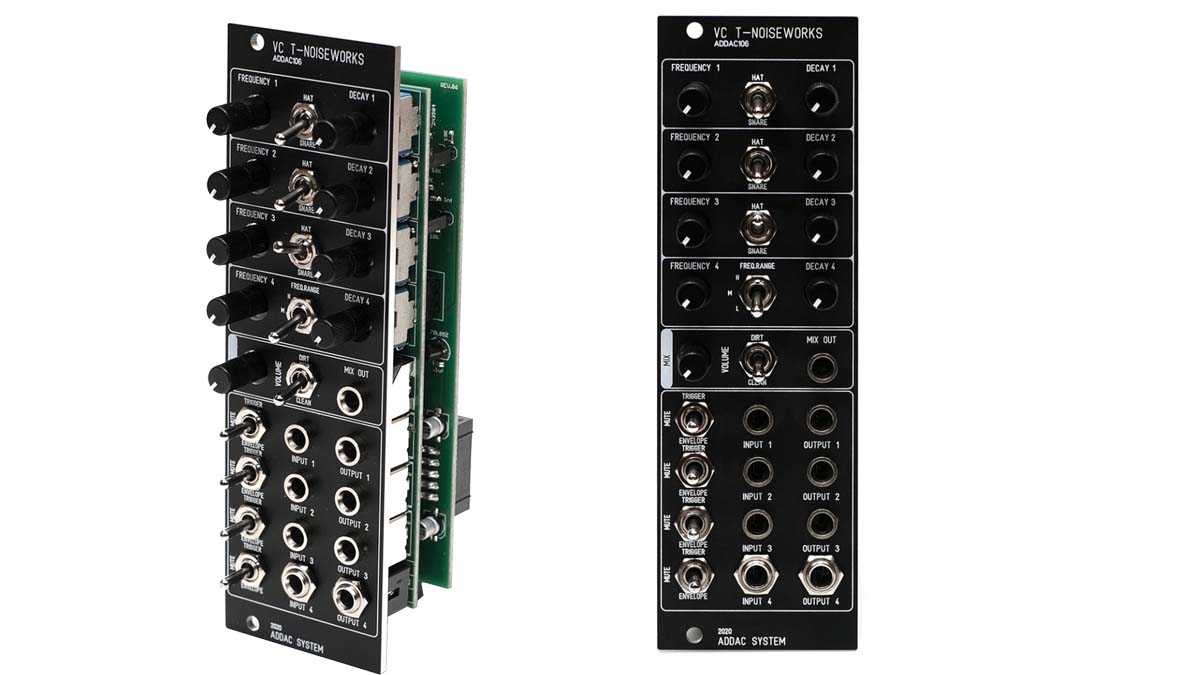MusicRadar Verdict
The 106's playability and range of easy-to-access sounds are ideal for incorporating into a larger rig for live performance or the studio.
Pros
- +
Independent triggers for each voice.
- +
The mixer's gain switch is a masterstroke.
- +
Easy to use.
- +
Excellent at kicks, snare and hi-hat sounds.
Cons
- -
Not for acoustic or 909-style percussion.
MusicRadar's got your back
What is it?
ADDAC have been working on the T-Noiseworks group of Eurorack modules for some time now. The 106 is the last of them and definitely not the least!
Don’t be fooled by the 106 name either – this is no Juno clone. What you do get is a four-voice synth module, with a handful of sound-shaping controls.
The 106 is meant for creating percussion: it’s not a tool that will help you create simulated acoustic kits, but one that excels at driving kicks and noise snare and hat tones. In that respect, I think of it a bit like a miniature DFAM that can be sequenced however you see fit.
Performance and verdict
On to the module itself then. It’s styled like any other ADDAC gear, with a black front and clear fonts with sensible labelling – which I prefer to the increasingly common glyphs that need deciphering from some other manufacturers.
The layout is pretty intuitive too, with playable controls for each voice stacked in the top half, with connection sockets below, split by a summing mix section, more about which later.
Each voice has a frequency knob for tuning, a decay control, with a switch between. This switch is in reality a simple high-pass filter with a preset frequency for the passing signal.
In this implementation it is used to dictate whether a voice should be a hat or snare sound. This is true of voices 1 through 3, where voice 4 has a three-way switch to give three frequency ranges, great for more tonally based percussion sounds like kicks and toms.
Want all the hottest music and gear news, reviews, deals, features and more, direct to your inbox? Sign up here.

• Mutable Instruments Plaits
Huge sound possibilities in a small module. Perfect for a small system but equally useful in a monster rig. The addition of the noise and percussion sources and the fact you can also use it as an LFO means it will always find a place no matter how deep your patching gets.
This might sound limiting and that’s a fair assumption but it limits in a good way, keeping the sounds focused, with all four voices working well together as a mini kit.
Triggering is handled in the lower section, where each voice has a trigger input, with associated switch for envelope, trigger envelope or mute, making this a pretty handy module for live work and jamming as you can set regular beat triggers and mute voices at will.
The addition of the clean/dirty switch is genius, plus the playability of the module makes it a contender for percussion in a variety of rigs which can span multiple genres.
This simple addition makes a big impact on the overall playability and ADDAC should be praised for it. Likewise the output section makes for a versatile module as there are individual outs for each voice, so down-signal shaping can be done selectively, as well as a summing mixer.
This mixer has a trick too, as it not only houses a gain control for the clean signal but a toggle which introduces some grit.
The spice of life?
The 106 has a degree of range for achievable sounds, however it really does one thing well and that is creating percussive sounds that are based on differing frequencies of noise.
It won’t help you get a 909 or acoustic sound but if you want short clipped hats, gritty snares and similar it’s a winner. The kicks, on the other hand, are more versatile and you can get everything from raspy toms to deep booming bass easily.
The addition of the clean/dirty switch is genius, plus the playability of the module makes it a contender for percussion in a variety of rigs which can span multiple genres.
MusicRadar verdict: The 106's playability and range of easy-to-access sounds are ideal for incorporating into a larger rig for live performance or the studio.
Specifications
- TYPE: Eurorack module
- KEY FEATURES: Four voices (3 pre-VCA, 1 post) with frequency and delay controls, independent triggering, summing mix out with volume control and dirt toggle switch
- CONTACT: Addac System
